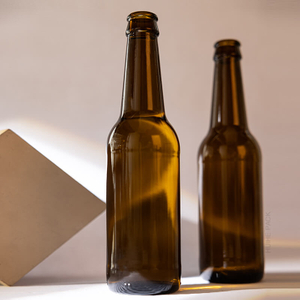Customized | Quality Control | Case | Blogs | Download | FAQ
Views: 0 Author: HUIHE Publish Time: 2025-10-22 Origin: HUIHE PACK
Are you confident your current cider packaging is protecting your product’s integrity and maximizing your brand’s shelf appeal? For large-scale hard cider producers, brewers, and global beverage brands, the choice of a glass apple cider bottle goes far beyond aesthetics—it is a critical engineering decision that affects carbonation, shelf life, and supply chain efficiency. This definitive guide cuts through the noise, providing technical specifications and wholesale sourcing advice directly from a leading glass manufacturer. We address the exact bottle types—from high-pressure sparkling cider bottles to cost-efficient 330ml options—that will meet your global production demands. Keep reading to unlock the strategies for selecting and securing the most cost-effective cider bottles wholesale for your next run.
Choosing the right container for your cider isn’t just about making it look nice; it’s about science. When you’re producing hard cider bottles at scale, quality and safety are non-negotiable.
Glass remains the industry gold standard for several key reasons that plastic or aluminum simply can’t match:
Air-Tight Perfection (The Flavor Lock): Glass is completely non-porous. This means it provides an absolute barrier against oxygen and CO2 exchange. Your high-quality apple cider glass bottle will keep the precious aromas in and the stale air out, ensuring your cider tastes exactly as intended—months down the line. It's the ultimate flavor fortress.
Inert Material (No Nasty Surprises): Glass is chemically inert. Unlike some plastics or metals that can leach subtle, unwanted flavors into the liquid over time, glass does nothing. It doesn't react with the alcohol, the acid, or the color of your cider. It's the silent, reliable guardian of your brew.
Think of a bottle as a specialized suit of armor. The job of a still cider bottle is very different from that of a bubbly one.
The Sparkling Challenge: If you produce Sparkling Cider, your bottle must be built tough. These carbonated beverages generate significant internal pressure, similar to a car tire. A standard thin bottle won't cut it; you need a pressure-rated container to prevent dangerous—and expensive—"bottle bombs." This is why high-end sparkling cider bottles often share design DNA with the apple cider champagne bottle, complete with thicker walls and a deep punt (the indentation at the bottom) to distribute stress.
The Specialty Segment (Still vs. Fruit): If you are packaging a non-carbonated or low-carbonated brew, like a traditional still cider, you have more flexibility. For specialty fruit-infused ciders—such as a dark fruit cider bottles run or a delicate pear cider bottle batch—the primary concern shifts to brand differentiation and color protection (which we cover in a later section).
The shape of your bottle signals its contents to the customer. Are you serious, relaxed, or celebratory?
The Workhorse: Standard Long-Neck Beer Bottle.
Application: The most common choice for mainstream, mass-market apple cider beer bottle products. It’s familiar, compatible with standard capping equipment, and cost-effective.
Common Size: Typically 330ml or 355ml.
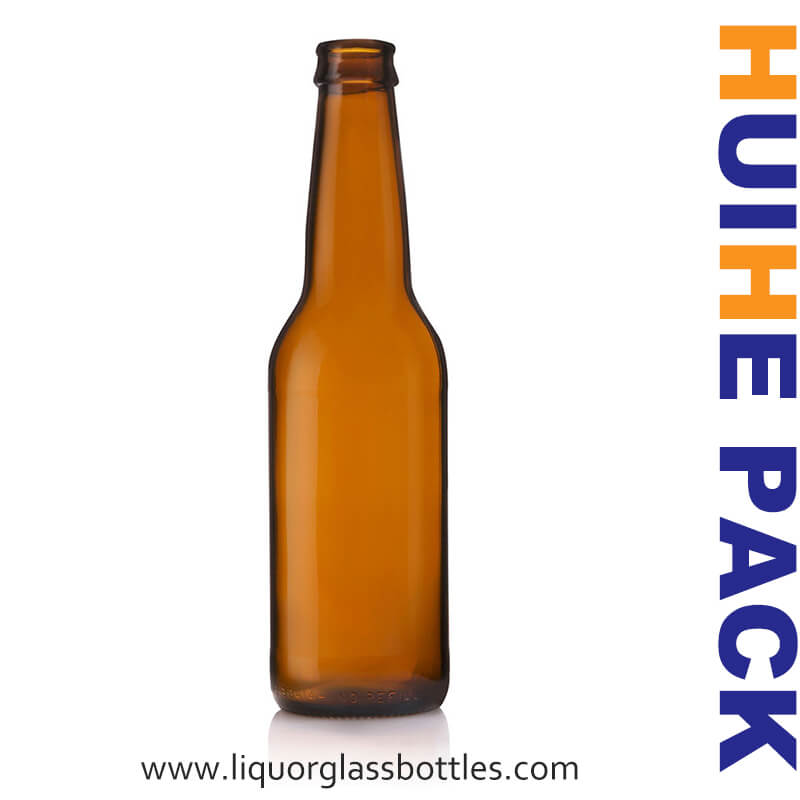
The Celebration King: Champagne/Pressure Bottle.
Application: Ideal for premium, naturally carbonated, or "méthode traditionelle" sparkling ciders. Its heavy build can handle the highest pressures.
Common Size: Almost always 750ml.
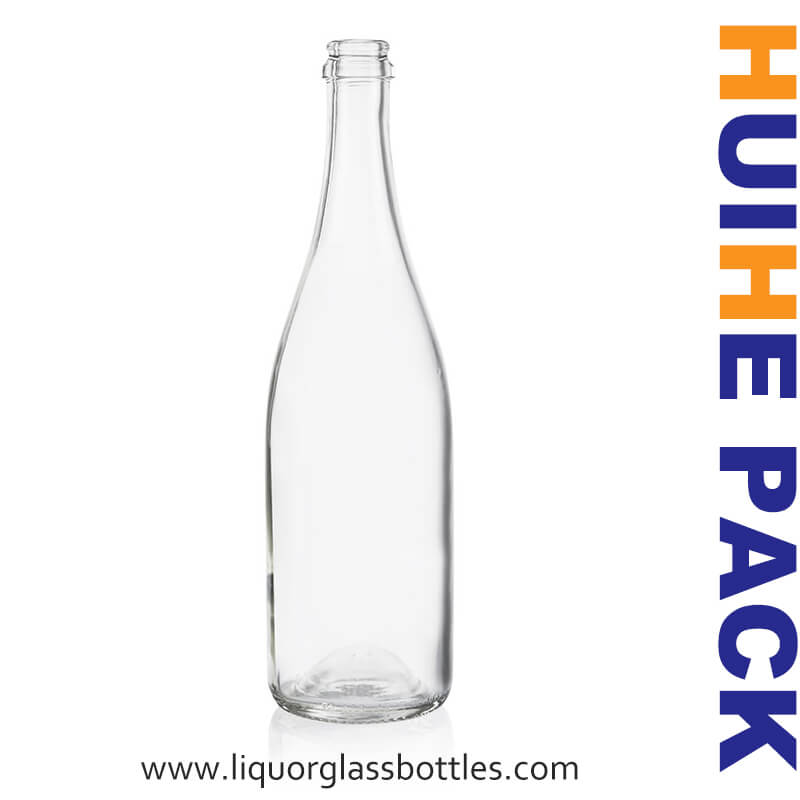
The Elegant Classic: Burgundy/Wine Bottle.
Application: A refined choice for still or specialty ciders, giving the product a sophisticated, wine-like look. Perfect for your apple cider wine bottle segment.
Common Size: 750ml.
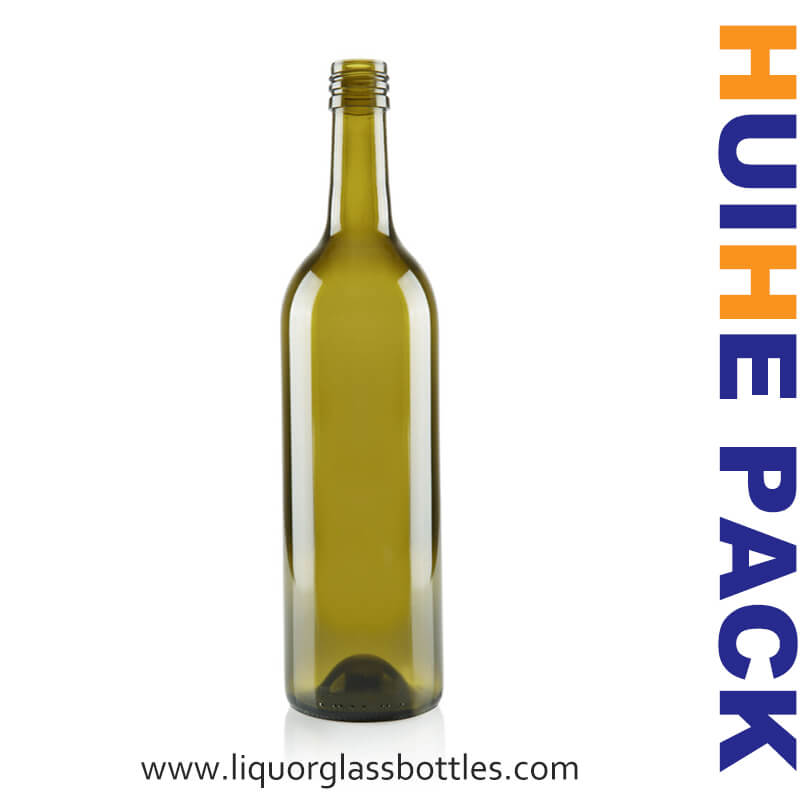
The Attention Seeker: Square/Novelty Bottles.
Application: Brands looking to stand out on a crowded shelf often opt for customized or unique square/novelty shapes. This is popular for small-batch or premium fruit cider bottles where differentiation is key.
Common Size: Often 500ml or custom-made sizes.
Unique cider bottle
ice cider bottle
The Big Share: Jugs and Growlers.
Application: Designed for bulk sales, taprooms, or customers who use glass apple cider jugs for home brewing. They offer a rustic, large-format option.
Common Size: 1 Liter (L) and the massive 3 litre cider bottles (or 3L cider bottle).
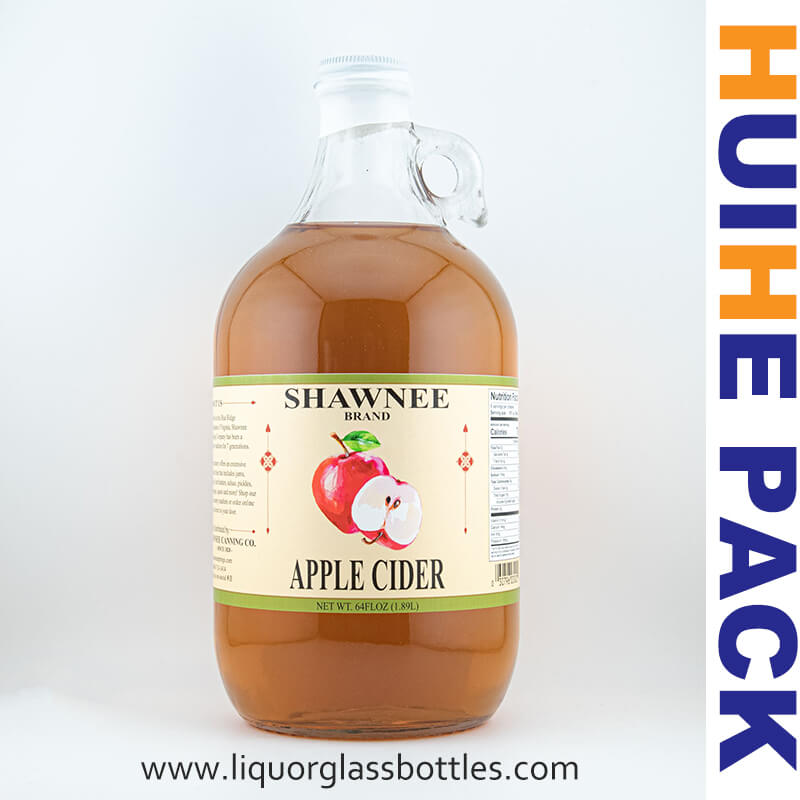
*Please note: The Cider brand product images used here are credited to their respective owners, as indicated on each picture.
As a high-volume producer, your choices here directly impact your costs, filling line efficiency, and product quality. This section moves past simple shapes to focus on the numbers and technical details that matter most for cider bottles wholesale.
Choosing the right volume is a blend of market trend and production efficiency. For cider bottles wholesale, standardization is your friend, but we also support unique requests.
The Single-Serve Favorites: For everyday consumption or single-serving cider 330ml bottles are the global favorite, especially for mainstream 330ml cider bottles and hard seltzers. They are economical and minimize waste.
The Standard Unit: The 500ml cider bottles (or half-liter) represent the common single-serving size in many European and craft markets. It’s a versatile size that offers a bit more value to the customer.
The Share Size: The 750ml cider bottles are essential for premium, still, or sharing formats, aligning your product with the classic apple cider wine bottle segment.
The Big Guys (Large Format): Need to stand out or cater to bulk needs? We offer large formats like the 3 litre cider bottles (the 3L cider bottle). These big cider bottle options, often appearing as glass apple cider jugs, are great for promotional displays or on-premise service. Don't worry, we make sure they are tough enough to handle being lifted!
Color isn't just decoration; it's product defense. When you buy glass, you are buying a form of sunblock for your beverage.
Green Glass (The Traditional Shield): Green cider bottles, especially the apple cider green bottle, are traditional for a reason. They filter out a good portion of the damaging UV spectrum, protecting light-sensitive compounds and maintaining the cider's color and flavor stability. It gives your brand that authentic, timeless look.
Clear Glass (The Showcase): Clear cider bottles are perfect if you want the customer to see the vibrant color of your product immediately. However, they offer almost no UV protection. These are best suited for ciders with ingredients less sensitive to light, or products with a high turnover rate.
Amber/Brown (The Ultimate Protector): While not explicitly listed, Amber (brown) offers the maximum protection against UV light, preserving flavor far longer than green or clear glass.
Our factory controls the precise amount of metallic oxides used in the glass mixture to maintain consistent color and reliable UV filtration properties. (As noted in the [Referenced Source, like jarsandbottles.co.uk], light exposure is a key factor in cider degradation, making color choice crucial.")
The "finish" is the part of the bottle that holds the cap—it’s where the seal is made. A millimeter difference here can ruin an entire production run.
Crown Cap (The Secure Lock): The Crown Cap (or beer cap) is the most reliable and affordable system for pressurized drinks. It creates a powerful, fail-safe seal essential for both apple cider beer bottle and many apple cider champagne bottle designs.
Screw Cap (The Convenience Factor): Screw Caps (e.g., PP28 or ROPP) are popular for still ciders, juices, and low-carbonation drinks, offering consumers easy resealability.
Corking (The Premium Touch): Traditional Corking is reserved for high-end, vintage, or specialty sparkling ciders where the ceremonial "pop" is part of the brand experience.
[Supplier Advantage]
As a major manufacturer, we strictly adhere to global finish standards (such as PP28, ROPP) across all our stock and custom molds. This guarantees 100% compatibility with your existing high-speed bottling and capping equipment, eliminating costly line stoppages.
Although we have introduced the basic shapes above, remember that even within a shape category (like beer bottle), there are subtle design variations that impact your brand.
The Apple Cider Beer Bottle: This shape maximizes efficiency on the filling line and communicates a casual, sessionable product, often seen in the 330ml cider bottles range.
The Apple Cider Champagne Bottle: This design communicates luxury and high pressure. Its heavy weight is perceived as premium quality by the consumer and is required for safely packaging high-carbonation sparkling cider bottles.
Choosing the right glass bottle is not a guessing game; it’s a strategic move. Your packaging is your final quality control check, your chief marketing officer, and your logistical partner all in one. Your decision must balance three essential factors: Product Characteristics, Market Positioning, and Supply Chain Requirements.
Before you consider aesthetics, you must consider physics. The bottle has to perform its primary duty: protecting your cider.
Pressure Demand (Sparkling vs. Still)
Ask yourself: is your cider fizzy, or is it quiet?
The Decision Point: If you produce highly carbonated drinks—whether sparkling cider bottles or strong hard cider bottles—you absolutely must select a pressure-rated bottle. Underestimating internal pressure is not only risky (potential for breakage) but unprofessional. Pressure bottles, like thick-walled champagne styles or reinforced beer bottles, are non-negotiable for safety and structural integrity.
Light Sensitivity and Shelf Life
Does your cider hate the sun? Many ingredients, particularly specific hop varieties or natural fruit pigments, are highly sensitive to UV light. This leads to "light strike," which ruins flavor and color over time.
The Decision Point: To prevent light damage and extend shelf life, we strongly recommend using brown or apple cider green bottle options. These colors filter the damaging light spectrum. They are your cider’s sunglasses! For still or darker ciders, you might consider clear cider bottles to showcase the beautiful liquid, but be aware that you are trading shelf protection for transparency.
Filling and Sealing Compatibility
No matter how beautiful the bottle is, if it stops your bottling line, it’s a failure.
The Decision Point: The bottle’s finish (the neck) must be 100% compatible with your existing capping equipment (crown caps, screw caps, or corking machines). For large-volume production, the smallest mismatch means expensive downtime. This technical alignment is the non-glamorous, yet most crucial, part of high-volume bottle sourcing.
This is where you make your brand statement. Your bottle shape and size tell the customer who you are.
Volume Positioning
Who is drinking your cider, and how much?
The Decision Point:
Single Serve: Go with 330ml or 500ml for grab-and-go convenience.
Sharing/Premium: Choose 750ml, often aligning with the elegant profile of an apple cider wine bottle.
Bulk/Family: Utilize 3L glass apple cider jugs for taprooms, events, or customers who want to pour from a large, rustic container.
Brand Image and Aesthetics
What feeling do you want to convey on the shelf?
The Decision Point:
High-End/Celebratory: The structured, heavy build of an apple cider champagne bottle screams premium quality and occasions.
Casual/Accessible: The long-neck apple cider beer bottle communicates ease, approachability, and is the standard for the mass hard cider market.
Unique/Craft: Opting for a customized or novel bottle shape is the best way to ensure maximum shelf standout and differentiation in a crowded market.
Core Issue | Product/Application Scenario | Recommended Bottle Type | Recommended Color | Key Advantage |
High Pressure | Sparkling Cider, Hard Cider | Champagne Bottle, Reinforced Pressure Bottle | Green, Amber (Brown) | High pressure rating, Premium feel |
Mass Market | Mainstream Hard Cider, Ready-to-Drink Fruit Wine | Standard Long-Neck Beer Bottle | Amber (Brown), Green | Low cost, High filling line compatibility |
UV Protection | Light-sensitive Cider, Long Shelf Life required | Standard Long-Neck Bottle, Burgundy Bottle | Green, Amber (Brown) | Blocks UV light, Protects flavor |
Premium/Still | Still Cider, High-end Specialty Beverages | Burgundy Bottle (Wine Bottle) | Clear, Green | Elegant appearance, Suitable for cork or screw cap |
Large Volume/Sharing | Bulk Retail, Home-brewing, On-Premise Use | Glass Jugs or Large Format Bottles | Clear, Green | Meets large volume needs, Saves on packaging cost |
Once you’ve decided on the technical specifications of your bottle, the next step is crucial: establishing a reliable and cost-effective supply chain. For any major brand, this means going factory direct to maximize profit margins and control quality.
When you search for "cider bottles for sale" or "cider bottles wholesale," you need more than a price list—you need a reliable partnership.
Minimum Order Quantity (MOQ) and Cost Efficiency: Dealing directly with us, a high-volume manufacturer, allows you to leverage the principle of scale. While we must maintain a Minimum Order Quantity (MOQ) for efficient production runs, reaching that threshold dramatically lowers your unit cost. Simply put: the bigger the order, the smaller the price tag. We help you analyze your annual needs to find the sweet spot between inventory costs and production savings.
The Sourcing Process: Quote to Delivery: Our inquiry process is straightforward: You provide the specs (volume, color, cap finish), and we return a comprehensive quote. We provide clear, realistic timelines for production and shipping, ensuring you can plan your filling schedules without last-minute panic.
Your bottle doesn't have to be a stock item. Customization is the fastest way to make your cider unforgettable on the shelf.
The Power of Custom Molds: Every great brand starts with an idea, and we turn that idea into a unique glass mold. We provide full Original Equipment Manufacturer (OEM) services,allowing you to design a proprietary shape that nobody else has.
Embossing and Branding: Want your logo permanently etched into the glass? We offer professional embossing and debossing services to stamp your brand name or logo directly onto the bottle. This instantly upgrades a generic empty cider bottle into an exclusive, high-value asset.
Why Start with Empty Cider Bottles? Customization means starting from scratch with empty cider bottles. This process is an investment, but it guarantees that your apple cider bottle is structurally and aesthetically unique to your product, reinforcing premium market positioning.
Glass is fragile, but our logistics aren't. Our job isn't done until the glass is safely on your loading dock.
Professional Pallet Packaging: We use sophisticated palletizing techniques, including shrink-wrapping, layer pads, and industrial banding, specifically engineered to absorb the shock of long international voyages. This specialized packaging ensures your containers arrive ready to hit the filling line, minimizing breakages and supply risks.
Global Logistics Expertise: Shipping millions of bottles worldwide requires finesse. We manage the complex ocean freight and customs documentation, offering you a smooth,end-to-end service. Our goal is simple: deliver your cider bottles on time, in full, anywhere on the globe.
Understanding the cost structure of glass is step one in smart procurement. The price of an apple cider bottle is influenced by volume, design complexity, color, and, most critically, the size of your order. Let’s break down the economics.
Small batches often come with big price tags—it’s just the nature of manufacturing and logistics.
Who This is For: This segment is primarily for small-scale craft cideries, home brewers, or brands in the initial sample testing phase. They need smaller quantities to prove their market before committing to massive runs.
Where to Buy: These buyers typically source from online specialty retailers or local brewing supply stores. (You might check out sites like Uline or Specialty Bottle for general retail price benchmarks in the North American market.)
The Cost Reality Check: When you buy small, the price per bottle is naturally higher. Why? Because the cost of handling, labor, and logistics (sorting a few boxes vs. loading a container) gets bundled into that small unit price. Our advice? Use these retail prices only as a benchmark for your market's retail cost, but never as a basis for factory-level negotiation.
For major brands and global distributors, skipping the middleman and coming directly to the source is the only way to achieve maximum profitability.
Who This is For: You, the distilleries, breweries, major cider brands, and international distribution partners looking for serious volumes of cider bottles wholesale.
The Real Cost Advantage:
Economies of Scale (The Volume Discount): Once you hit our Minimum Order Quantity (MOQ), the unit cost drops dramatically. This is simple scale: running the line for 100,000 bottles costs far less per unit than running it for 10,000.
Customization Pays Off: The cost of designing a unique mold or applying your logo via embossing is significant, but when amortized (spread out) over hundreds of thousands of units, the per-bottle cost becomes negligible—and the brand value is priceless.
Supply Chain Optimization: By partnering directly with HUIHE (a leading Chinese supplier of alcohol packaging), you eliminate the middle layer of distributors. You save on multiple handling fees and gain efficiency in container management for international logistics.
If your required volume is in the tens or hundreds of thousands, you are missing out on significant savings by not talking to a factory. Contact us today. Our professional wholesale team will work with your budget, specifications, and delivery schedule to provide the most competitive global quotation on your next order.
Selecting the right glass container is more than a purchase; it is a critical investment that guarantees your cider's quality and elevates your brand image on the global stage.
We are HUIHE PACK, your trusted partner in premium glass packaging, with 16 years of focused experience in bottling solutions for alcoholic beverages. We operate our own factory and are uniquely positioned to offer unmatched advantages:
Quality Assurance: Our dedicated 20+ member Quality Control team ensures every unit is perfect, with 100% product inspection and full international certifications.
Cost Efficiency & Stock: As a wholesale supplier, we offer immediate stock availability on popular spirit and cider bottles, giving you a clear price advantage and faster delivery.
Customization Power: Our in-house design team provides seamless OEM/ODM services, ready to develop unique molds and branding for your next product line.
Global Reliability: Having successfully exported to 50+ countries, we offer a proven, secure, one-stop packaging solution.
Our promise is simple: We offer free samples and prototyping so you can inspect and approve the quality before placing a large order. You see the product; you sign off on the quality.
Don't settle for less when scaling your brand. Leverage our factory-direct pricing and technical expertise.
HUIHE Packaging Group - Tap into 16 Years of Glass Bottle Expertise:
Contact us now to get your customized Glass Apple Cider Bottle wholesale quote!
Email: max@huihepackaging.com
What are cider bottles called?
Cider bottles are generally called cider bottles or hard cider bottles, but they often use standard glass industry formats like beer bottles (long-neck) or champagne bottles (pressure-rated).
Is cider a drink of alcohol?
Yes, in most of the world, cider (or hard cider) is an alcoholic beverage made from fermented apple juice.
What bottles to use for cider?
You should use pressure-rated glass bottles (like champagne or heavy beer bottles) for carbonated or sparkling cider, and standard glass wine or beer bottles for still (non-carbonated) cider.
Is cider healthier than beer?
Cider is generally not significantly healthier than beer; both contain similar calories and carbohydrates, though cider may be naturally gluten-free.
Is cider stronger than wine?
No, cider is typically weaker than wine. Most hard ciders range from 4.5% to 8.5% ABV, while wine typically starts at 11% ABV or higher.
What is the British slang for cider?
The most common British slang for cider is scrumpy.
How many units in a bottle of cider?
Units depend on the size and ABV, but a standard 500ml bottle of 4.5% ABV cider contains 2.3 units of alcohol.
How many calories in a bottle of cider?
A standard 500ml bottle of 4.5% ABV cider typically contains between 180 and 220 calories.
How many calories in a bottle of Old Mout cider?
The exact calories vary by flavor, but a 500ml bottle of Old Mout Original (4.0% ABV) contains approximately 190 to 200 calories.
How to open a sparkling cider bottle?
A sparkling cider bottle is typically opened by carefully twisting off the wire cage and gently holding the cork while rotating the bottle to ease the cork out, similar to champagne.
How do you open a sparkling cider bottle?
You open it by removing the cage (muselet) and gently twisting the bottle while holding the cork to release the pressure slowly, which prevents the cork from flying out.
How to open a bottle of sparkling cider?
Use a slow, controlled motion, twisting the bottle (not the cork) after securing the cork with your hand.
How to open a sparkling cider bottle without a bottle opener?
If it uses a crown cap (like a beer bottle), you can use a lighter edge, a key, or a spoon handle as a lever against the lip of the cap. If it uses a cork, no opener is needed.
How to open an apple cider bottle without a bottle opener?
If the apple cider bottle has a standard crown cap (beer style), you can use a key or the edge of another bottle cap as leverage. If it is a cork, no opener is required.
How to open Martinelli's apple cider without a bottle opener?
Martinelli's sparkling cider uses a re-sealable twist-off cap that generally requires no tool, but you can use a rubber gripper for extra leverage if it’s tight.
What is the difference between cider and hard cider?
In the US, hard cider specifically refers to the alcoholic version, while cider often refers to non-alcoholic pressed apple juice; in the UK and most other regions, cider automatically means alcoholic.
What is the best temperature to serve cider?
Most ciders are best served chilled, between 7°C and 10°C (45°F and 50°F).
Can you age cider in the bottle?
Yes, some high-quality, high-ABV ciders (especially those using a secondary bottle fermentation) can be aged in the bottle for several years.



